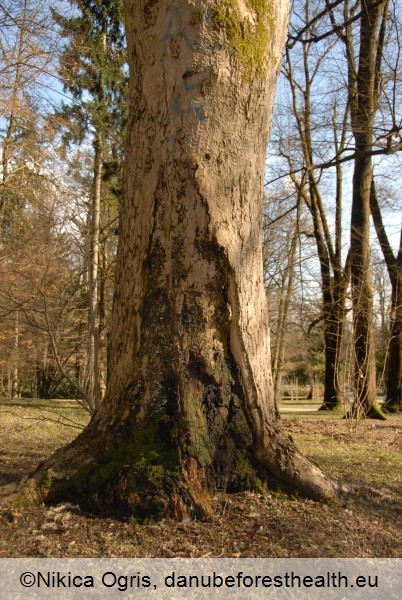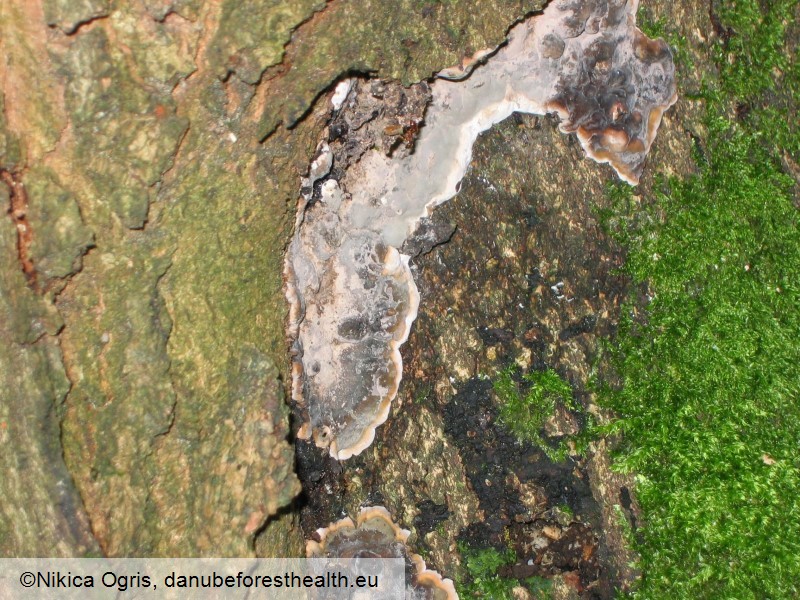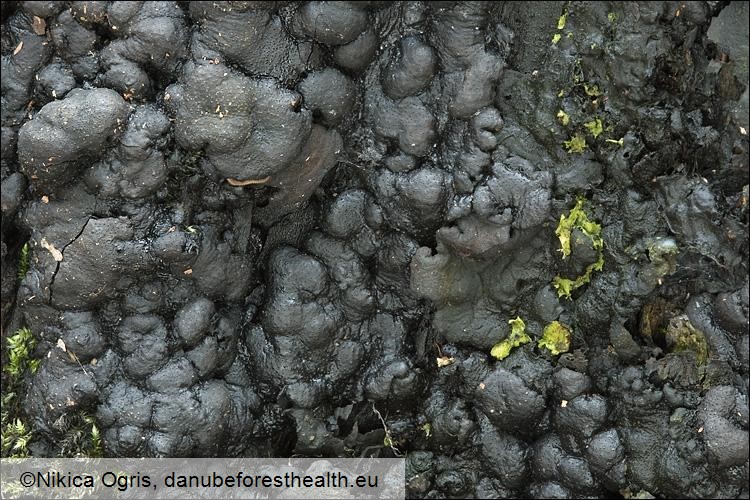Fungi
Brittle cinder
Kretzschmaria deusta
Nikica Ogris, Thomas Cech
|
|

Fig. 1. Canker on plane tree caused by Kretzschmaria deusta

Fig. 2. Young fruiting bodies of Kretzschmaria deusta

Fig. 3. Mature fruiting bodies of Kretzschmaria deusta
DETECTION PERIOD:
Whole year
DESCRIPTION:
It can invade wood through injuries to the roots and stem, causing severe white rot with black zone lines. The infection spreads upwards the wood within root and stem. Often an infection escapes notice until the sudden collapse of the tree. K. deusta is also a weak parasite which can cause formation of cankers (Fig. 1). On dead parts of the bark fruiting bodies develop, which are flat, crust-like stromata, on the upper surfaces of which conidia are formed in spring, appearing as a flour-like, whitish grey coating (Fig. 2). In summer, the stromatal mass, which reaches up to 20 cm across, changes into a black, charcoal-like, very dry, lumpy structure with numerous perithecia buried in the upper surface (Fig. 3).
HABITAT:
Lime (Tilia spp), beech (Fagus sylvatica), horse chestnut (Aesculus hippocastanum), elms (Ulmus spp.), planes (Platanus spp.), and other broadleaves.
STATUS:
Saprotroph and weak pathogen. Widespread.
IMPACT:
Causes white rot and canker formation. Young trees die off. Mature trees can live with the fungus for decades. The fungus can develop entirely saprotrophically in the stumps of broadleaves.
SIMILAR SPECIES:
None (if both the conidial and perithecial stages are present).
|